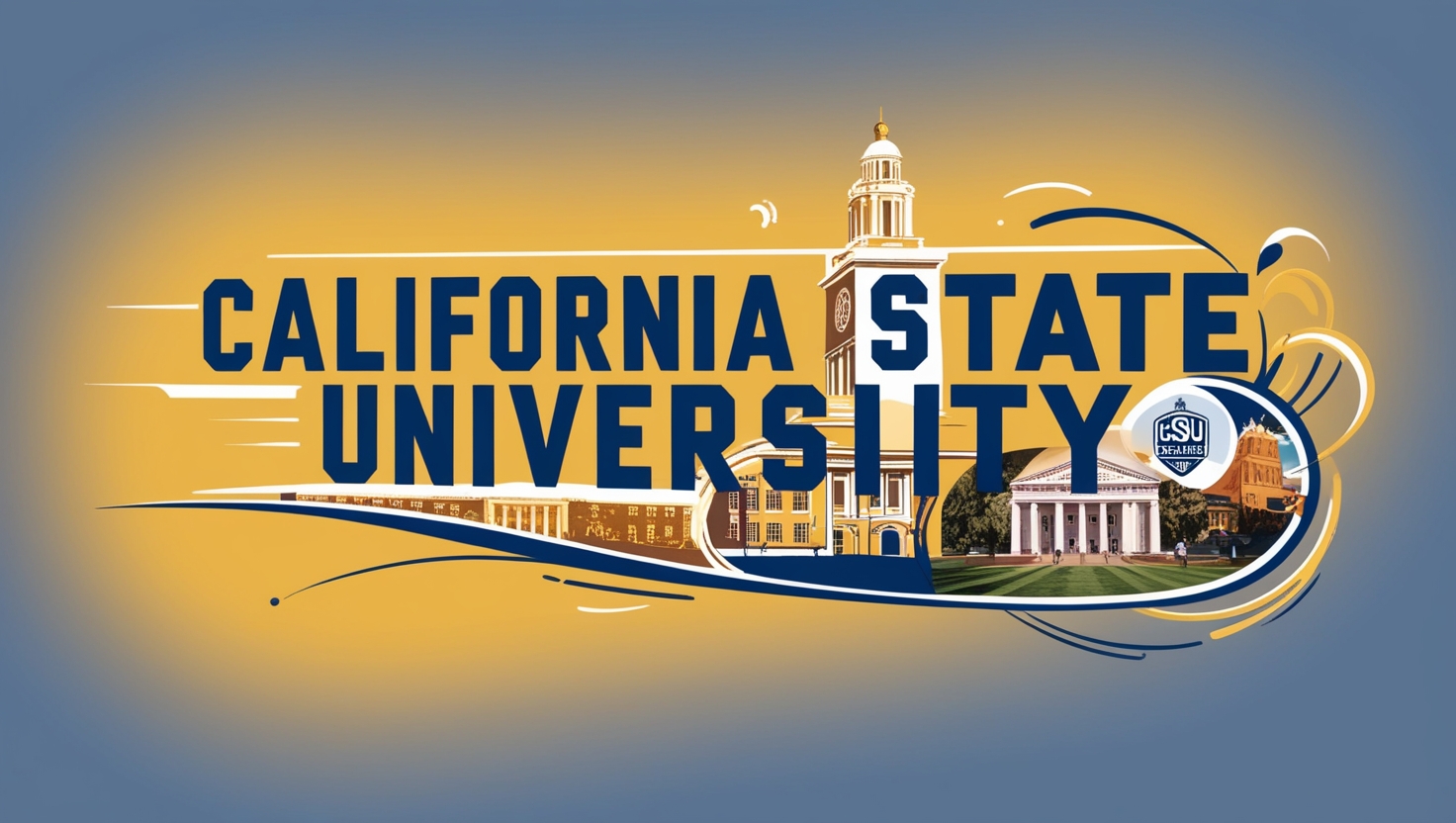
California State University:
Introduction
California State University (CSU) stands as one of the most significant educational institutions in the United States, playing a pivotal role in shaping the academic landscape of California and beyond. With its extensive network of campuses and diverse student body, CSU has become synonymous with access to higher education, offering numerous opportunities for personal and professional growth.
Founded in 1947, CSU has grown from a singular institution into a robust system comprising 23 campuses, serving over 480,000 students annually. This growth is a testament to its commitment to inclusivity and educational excellence. In this article, we will delve into the rich history, vibrant student life, and future initiatives of California State University, providing a comprehensive overview of its impact on students and communities alike.
History of California State University
Founding of CSU
The roots of California State University can be traced back to 1857 with the establishment of the first normal school in California, aimed at training teachers. However, it wasn’t until 1947 that the system we recognize today began to take shape. The California State College system was created to meet the burgeoning demand for higher education in the post-World War II era.
Historical Context (1947 Establishment)
In the wake of the war, returning veterans sought education and job training, leading to a significant increase in the number of students entering higher education. Recognizing this need, California lawmakers established the California State College system, which would later evolve into California State University.

Initial Goals and Mission
The primary mission of CSU was clear: to provide accessible, affordable, and high-quality education to a diverse population. From its inception, CSU focused on preparing students for careers in various fields, emphasizing practical and applicable skills alongside academic knowledge.
Evolution Over the Decades
Over the decades, CSU has expanded significantly, both in the number of campuses and the programs offered. The 1960s and 1970s saw rapid growth, with new campuses opening and existing ones expanding their academic offerings. This expansion allowed CSU to accommodate the increasing number of students seeking higher education.
Key Milestones
Some key milestones in CSU’s history include the establishment of the first master’s programs in the 1960s, the implementation of the California Master Plan for Higher Education in 1960, and the transition from California State Colleges to California State University in 1972. Each of these milestones marked a significant step in CSU’s evolution as a major educational institution.
Influence of Social Movements on Education
Throughout its history, CSU has been influenced by various social movements, including the Civil Rights Movement, which emphasized the need for equal access to education. CSU has continuously adapted to ensure that it meets the diverse needs of California’s population, striving for inclusivity in both its student body and faculty.
Overview of Campuses
List of Campuses
CSU operates 23 campuses across California, each with its unique identity and strengths. Here’s a brief overview of some notable campuses:
- California State University, Los Angeles (CSULA)
- California State University, Long Beach (CSULB)
- California State University, San Francisco (SFSU)
- California State University, Sacramento (CSUS)
- California State University, Northridge (CSUN)
Brief Description of Each Campus
Each CSU campus offers a distinct atmosphere and a wide range of programs. For instance, CSULA is known for its strong emphasis on urban affairs and public service, while CSULB has a robust arts program and is one of the largest CSU campuses.
Unique Features and Programs Offered
Many campuses also offer unique programs tailored to local industries. For example, CSU Monterey Bay focuses on marine science and environmental studies, leveraging its proximity to the ocean. Similarly, CSU San Bernardino offers specialized programs in business and public administration, catering to the diverse needs of its region.

Largest and Most Popular Campuses
California State University, Los Angeles
CSULA is particularly renowned for its diverse student body and commitment to social justice. The campus offers over 100 academic programs and has been recognized for its contributions to community service and engagement.
California State University, Long Beach
CSULB is known for its vibrant campus life and extensive program offerings, including highly regarded engineering and business programs. It consistently ranks among the top public universities in the West and is celebrated for its commitment to sustainability.
Academic Programs
Range of Degree Programs Offered
CSU offers an extensive array of academic programs across various disciplines. With over 1,800 degree programs available, students can find opportunities in fields ranging from engineering and healthcare to liberal arts and social sciences.
Undergraduate and Graduate Degrees
Students can pursue both undergraduate and graduate degrees at CSU. The system offers bachelor’s degrees in nearly every field, as well as master’s and doctoral programs in specialized areas. This diversity allows students to find their niche and pursue their passions.
Special Focus Areas (STEM, Arts, Humanities)
CSU places a strong emphasis on STEM (Science, Technology, Engineering, and Mathematics) education, but also offers robust programs in the arts and humanities. Initiatives in these areas often involve interdisciplinary approaches, encouraging students to think critically and creatively.
Innovative Programs and Initiatives
CSU is at the forefront of innovation in higher education. The system has implemented numerous programs to enhance the learning experience, such as the CSU Graduation Initiative 2025, aimed at improving graduation rates and reducing equity gaps among students.
Online Learning Options
In response to changing educational needs, CSU has expanded its online learning options. This flexibility allows students to balance work, life, and education, making higher education more accessible than ever.
Partnerships with Local Industries
CSU maintains strong ties with local industries, fostering partnerships that benefit both students and communities. These collaborations often result in internships, job placements, and real-world learning opportunities for students.
Student Life
Overview of Campus Culture
The culture at CSU campuses is as diverse as the student body. Each campus has its unique traditions and events, fostering a sense of community and belonging among students.
Diversity and Inclusion Efforts
CSU is committed to promoting diversity and inclusion. Various initiatives aim to support underrepresented students, ensuring that everyone has the opportunity to succeed academically and socially.
Clubs, Organizations, and Extracurricular Activities
With a wide variety of clubs and organizations, students have ample opportunities to get involved on campus. From academic clubs to cultural organizations, there’s something for everyone. These extracurricular activities enhance the college experience and help students develop leadership skills.
Housing and Campus Facilities
CSU campuses offer a range of housing options, from traditional dormitories to apartment-style living. Most campuses also provide modern amenities, including fitness centers, libraries, and study lounges, creating a supportive environment for students.
Description of Dormitories and Amenities
Dormitories vary by campus but typically offer communal living spaces, study areas, and recreational facilities. Many campuses also provide meal plans and dining options that cater to diverse dietary needs.
Recreational and Dining Facilities
Recreational facilities are plentiful, with gyms, sports fields, and wellness centers available to students. Dining options are equally diverse, often featuring local and sustainable food sources, which enhances the overall student experience.
Admissions Process
Overview of Admission Requirements
The admissions process at CSU is designed to be accessible while maintaining academic standards. Requirements may vary by campus and program but generally include a completed application, transcripts, and standardized test scores.
Freshman and Transfer Student Criteria
Freshman applicants are typically evaluated based on their high school GPA, standardized test scores (SAT/ACT), and extracurricular involvement. Transfer students must meet specific criteria, including a minimum number of completed college units.
Importance of GPA and Standardized Tests
GPA and standardized test scores play a crucial role in the admissions process. While some campuses have adopted test-optional policies, a strong academic record remains essential for admission.
Tips for Prospective Students
Prospective students should research their desired campuses thoroughly, attend information sessions, and connect with current students. These steps can provide valuable insights and help applicants make informed decisions.
How to Prepare a Strong Application
To prepare a competitive application, students should focus on their academics, gather strong letters of recommendation, and craft a compelling personal statement. Highlighting unique experiences and aspirations can set an application apart.
Resources for Financial Aid and Scholarships
CSU provides numerous resources for financial aid, including grants, loans, and scholarships. Students are encouraged to explore these options early in the application process to maximize their financial support.
Support Services for Students
Academic Advising and Tutoring
CSU offers comprehensive academic advising and tutoring services to help students succeed. Advisors assist with course selection, career planning, and navigating academic challenges, while tutoring centers provide additional support in various subjects.
Mental Health and Wellness Resources
The mental health and wellness of students is a top priority at CSU. Campuses provide counseling services, wellness programs, and resources for managing stress and promoting overall well-being.
Career Services and Internship Opportunities
Career services at CSU help students prepare for the workforce through resume workshops, interview preparation, and job fairs. Many campuses also have dedicated staff to assist students in securing internships, providing valuable real-world experience.
CSU’s Impact on the Community
Economic Contributions to California
CSU significantly contributes to California’s economy, generating billions in economic activity each year. The system provides a skilled workforce that supports various industries, enhancing the state’s economic vitality.
Community Engagement and Service Programs
CSU campuses actively engage with their communities through service programs and partnerships. Students are encouraged to participate in volunteer opportunities, fostering a sense of civic responsibility and connection to local issues.
Alumni Success Stories and Notable Figures
CSU boasts a robust alumni network, with graduates excelling in various fields, including business, education, and politics. Notable alumni include former California Governor Jerry Brown and actor LeVar Burton, showcasing the diverse paths CSU graduates can take.
Challenges Facing CSU
Funding and Budget Concerns
Like many public institutions, CSU faces challenges related to funding and budget constraints. Advocacy for increased state funding is crucial to maintaining educational quality and accessibility.
Addressing Enrollment Pressures
As demand for higher education continues to grow, CSU must address enrollment pressures. This includes expanding capacity, enhancing facilities, and ensuring adequate resources for all students.
Adapting to Changing Educational Needs
CSU is continually adapting to the changing landscape of higher education. This includes embracing technology, incorporating online learning, and responding to the evolving needs of students and industries.
The Future of California State University
Strategic Initiatives for Growth
CSU has laid out strategic initiatives aimed at expanding access and improving educational outcomes. These initiatives focus on equity, innovation, and enhancing student success.
Emphasis on Sustainability and Innovation
As part of its future vision, CSU is committed to sustainability and innovation. Campuses are implementing green initiatives and exploring new technologies to create a more sustainable and resilient educational environment.
Predictions for the Next Decade
Looking ahead, CSU is poised to continue its role as a leader in higher education. The emphasis on inclusivity, academic excellence, and community engagement will ensure that CSU remains a vital resource for students and the state of California.
Conclusion
California State University has established itself as a cornerstone of higher education, providing opportunities for countless students to achieve their academic and career goals. Its commitment to diversity, inclusivity, and innovation sets it apart as a leader in the educational landscape.
For prospective students considering their options, CSU offers a wealth of resources and programs that cater to various interests and career paths. The university’s dedication to shaping future leaders is evident in its rich history and ongoing initiatives.
Call to Action
We invite readers to share their experiences or thoughts about California State University. Whether you’re a current student, alumni, or simply interested in the institution, your voice matters. For more information, follow CSU on social media or visit campus websites to explore all that California State University has to offer.





